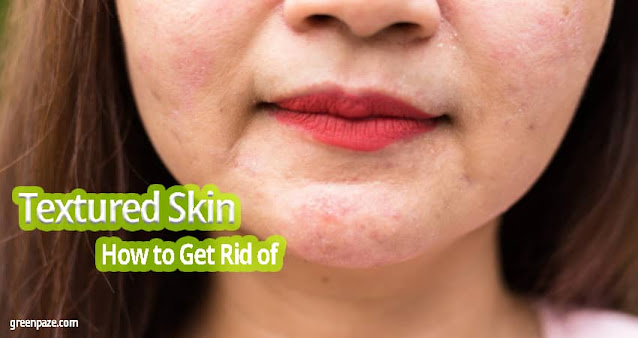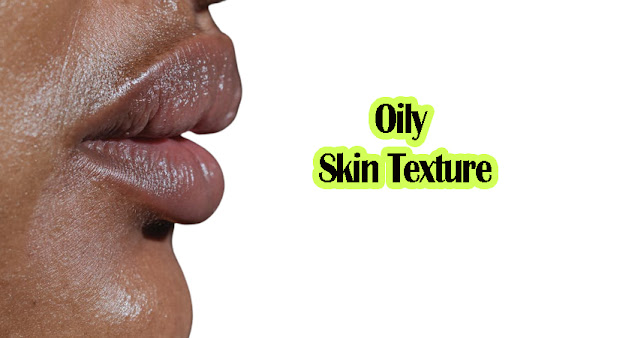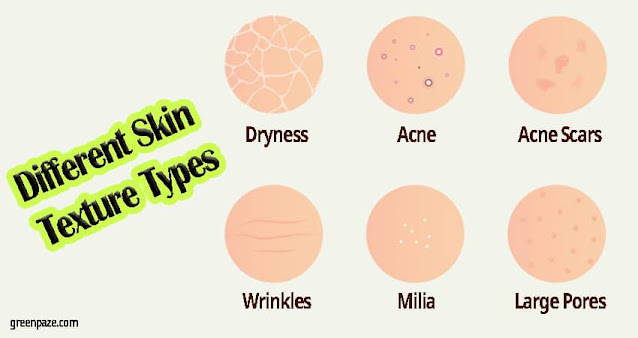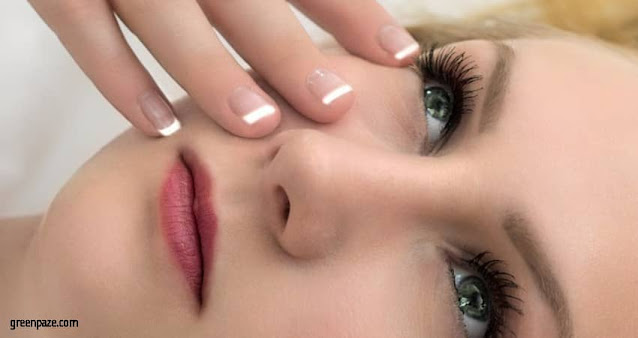Undoubtedly, smooth and soft skin is a universal desire for most of us, as we strive for a complexion that looks and feels its absolute best. However, achieving consistently smooth skin can often feel like an uphill battle, with various obstacles standing in the way, such as blemishes or textured skin. It seems like an array of skin concerns, ranging from acne and fine lines to those pesky unexpected bumps, can unexpectedly emerge and disrupt the harmony of your skin.
If you find yourself longing to eliminate these stubborn features from your face, you've come to the right place. This comprehensive guide will walk you through a regimen designed to address and prevent textured skin, providing you with effective strategies to restore smoothness and maintain a flawless complexion.
What is Textured Skin?
Skin texture, or ‘textured skin’, is a most used term in the beauty & skincare field that describes the condition of the skin's surface. Healthy skin texture feels pillowy, soft, smooth, and plump. This indicates a pretty balance of hydration, sebum, collagen, and elastin-the building blocks of healthy skin.
Textured skin refers to a condition where the surface of the skin appears uneven or rough to the touch. It can manifest as various types of textural irregularities, such as bumps, rough patches, raised or pitted areas, or a generally coarse texture. Textured skin can occur on any part of the body, but it is commonly observed on the face, particularly on the cheeks, forehead, or chin.
Uneven or bumpy skin texture can be rife with dry skin patches, or oily skin patches. It may involve skin tags, chicken skin, or can have the appearance of bumpy skin texture, acne, milia, or pustules. Skin's surface can feel thick, rough, and appear dull, and blotchy with discoloration and hyperpigmentation.
What are Different Skin Texture Types?
Many different internal and external issues can create different skin textures that appear on the skin. Dry or Dehydrated Skin Texture and Oily Skin Texture are the main types that appear on the skin. Dry or dehydrated skin texture mainly includes dry patches and a sandy skin texture. On the other hand, oily skin texture includes acne, orange peel skin texture, and acne scarring, and everybody experiences symptoms differently.
- Dry or Dehydrated Skin Texture
Dry skin generally refers to a skin type that deficiencies the ability to retain water or produce adequate oils.
Dehydrated skin loses water and moisture through external circumstances like the weather. An imbalance of lifestyle choices or a lack of skincare support can make dehydrated skin. Dehydrated skin isn’t only limited to dry skin types, oily skin can also be dehydrated, but it is a bit difficult to identify the differentiation between the two.
When skin fails to retain water ability, it can grow a rough skin texture that includes the following issues:
💧Dry patches
💧Hard bumps
💧Snakeskin texture
💧Flaking
💧Peeling and redness
💧Tight and itchy
💧Slits, cracks, and fissures
💧Sandy skin texture
💧Fine lines and deep wrinkles
💧Sagging due to elasticity loss
💧The skin has a dull complexion and a “dusty” finish
- Oily Skin Texture
Oily skin texture issues can often arise from what is actually dehydrated skin. Many individuals with genetically oily skin may not recognize the symptoms of having both dehydrated and oily skin, leading them to neglect proper hydration in their skincare routine. Consequently, they may resort to using harsh skincare products that strip the skin of its natural oils, without incorporating moisturizers, fearing that it will worsen their skin condition. Regrettably, this approach only serves to aggravate existing issues.
Oily skin can be a result of genetic factors or can be influenced by hormonal changes or imbalanced lifestyle choices. Individuals who have a genetic predisposition to oily skin may produce excess sebum, leading to a shiny complexion and a greasy texture. Hormonal fluctuations, such as those experienced during puberty, pregnancy, or certain medical conditions, can also contribute to increased oil production. Lifestyle choices, including a diet high in processed foods or excessive stress, can further exacerbate oily skin.
It is essential to understand that oily skin can still experience dehydration, which occurs when the skin lacks proper moisture. Dehydrated skin can feel tight, and dull, and may even produce more oil to compensate for the lack of hydration. Therefore, it is crucial to address both hydration needs and oil control when managing oily skin. Using gentle, non-stripping cleansers, incorporating lightweight and oil-free moisturizers, and adopting a balanced skincare routine can help restore the skin's moisture balance and improve the overall texture of oily and dehydrated skin.
The following skin texture issues may occur with oily skin:
💢Large pores or orange peel skin texture
💢Acne textured skin
💢Flaking underneath the oil
💢Elasticity loss and sagging
💢Continuous shine
💢Acne, pustules, blackheads
💢Acne scarring
💢Bumpy skin texture
💢Clogged pores
What Causes Textured Skin?
Not for all but for those wondering “Why is my skin so textured?”. Do not be worried, it can come from many varietal causes in addition to your unique skin type predispositions.
Some skin texture issues someone to medications, hormonal changes, allergies, or even genetics, while others are developed directly by an imbalanced lifestyle like too much sun, sugar, alcohol, limitless diet, a lack of stress management, sleep, or proper skin care.
The main three causes of skin texture:
1. Dehydration
2. Inflammation
3. Free Radical Damage
1. Dehydration
Dehydration plays a significant role in causing textured skin. When the skin lacks proper hydration, it can lead to a range of texture issues and exacerbate existing ones. Here are some ways in which dehydration can contribute to textured skin:
Impaired Barrier Function
Adequate hydration is essential for maintaining the skin's protective barrier. When the skin is dehydrated, this barrier can become compromised, allowing moisture to escape and environmental irritants to penetrate more easily. As a result, the skin may become more susceptible to inflammation, sensitivity, and a rough, uneven texture.
Increased Dead Skin Cell Buildup
Dehydrated skin tends to have a higher accumulation of dead skin cells on its surface. These dead cells can mix with excess sebum, leading to clogged pores and the formation of rough, bumpy areas. This can result in a textured appearance, especially in areas prone to oiliness, such as the T-zone.
Reduced Skin Elasticity
Hydration is crucial for maintaining the skin's elasticity and suppleness. When the skin lacks moisture, it can become dry and tight. Over time, this can contribute to the development of fine lines, wrinkles, and an overall loss of smoothness and plumpness. Dehydrated skin may also appear dull and lackluster, further emphasizing the texture issues.
Impaired Cell Turnover
Proper hydration is necessary for supporting healthy cell turnover, where new skin cells replace old ones. When the skin is dehydrated, the natural exfoliation process can become sluggish, leading to a buildup of dead skin cells and a rougher skin texture.
To combat textured skin caused by dehydration, it is crucial to prioritize hydration in your skincare routine. This includes drinking an adequate amount of water, using hydrating skincare products with ingredients like hyaluronic acid, glycerin, or ceramides, and avoiding harsh or drying products that can further deplete moisture from the skin. Additionally, incorporating regular exfoliation can help remove dead skin cells and promote a smoother texture.
2. Inflammation
Inflammation plays a significant role in causing textured skin. When the skin becomes inflamed, it can lead to various texture issues and contribute to an uneven complexion. Inflammatory skin conditions, such as acne, rosacea, eczema, or dermatitis, can result in redness, swelling, and the formation of bumps or rough patches on the skin's surface. These inflammatory responses can disrupt the normal structure and function of the skin, leading to textural irregularities. Additionally, chronic inflammation can also affect collagen production and contribute to the breakdown of the skin's supportive structure, resulting in a loss of elasticity and smoothness. Managing inflammation through appropriate skincare, a healthy lifestyle, and targeted treatments can help improve the texture and overall appearance of the skin.
3. Free Radical Damage
Free radical damage significantly plays also a vital role in causing textured skin. Free radicals are unstable molecules that can be generated by various factors such as UV radiation, pollution, stress, and poor lifestyle habits. These free radicals can cause oxidative stress in the skin, leading to damage to cells, proteins, and DNA. Over time, this oxidative stress can contribute to the breakdown of collagen and elastin fibers, essential for maintaining skin's firmness and smoothness.
As a result, the skin may develop a rough texture, fine lines, wrinkles, and uneven pigmentation. Additionally, free radical damage can also impair the skin's natural healing process, leading to delayed recovery from existing texture issues. Protecting the skin from free radicals by using antioxidant-rich skincare products, practicing sun protection, maintaining a healthy lifestyle, and adopting a balanced diet can help mitigate free radical damage and promote a smoother, more youthful complexion.
4. Aging
As we age, the skin undergoes natural changes that can affect its texture. The production of collagen and elastin, which are responsible for skin firmness and elasticity, decreases over time. This can lead to a loss of smoothness and the development of fine lines, wrinkles, and a generally rougher texture.
5. Environmental Factors
Environmental elements, such as exposure to UV radiation from the sun, pollution, harsh weather conditions, and air quality, can contribute to texture issues. Overexposure to the sun can damage collagen and elastin fibers, resulting in a rough or uneven texture. Pollution and harsh weather can also strip the skin of moisture and disrupt its natural balance, leading to dryness, irritation, and texture problems.
6. Lifestyle Choices
Unhealthy lifestyle habits can impact the texture of the skin. Smoking, excessive alcohol consumption, a poor diet lacking essential nutrients, chronic stress, and inadequate sleep can all contribute to texture issues. These factors can lead to inflammation, dehydration, and an imbalance in the skin's natural functions, resulting in roughness, dullness, and uneven texture.
7. Skin Conditions
Certain skin conditions can cause texture problems. Acne, rosacea, eczema, psoriasis, and keratosis pilaris are examples of conditions that can lead to bumps, redness, roughness, or an overall uneven texture.
How to Get Rid of Textured Skin?
Getting rid of textured skin requires a combination of consistent skincare practices and lifestyle adjustments. Here are some effective strategies to improve the texture of your skin:
Gentle Cleansing
Cleanse your skin twice daily with a mild, non-irritating cleanser. Avoid harsh scrubbing, as it can further aggravate texture issues.
Exfoliation
Incorporate regular exfoliation into your routine to remove dead skin cells and promote cell turnover. Choose gentle chemical exfoliants with ingredients like glycolic acid or salicylic acid, which can help smooth the skin's surface.
Hydration
Moisturize your skin daily to maintain hydration and nourishment. Look for moisturizers containing ingredients like hyaluronic acid, ceramides, or niacinamide, which can improve skin texture and strengthen the skin barrier.
Sun Protection
Protect your skin from sun damage by applying broad-spectrum sunscreen with at least SPF 30 daily, even on cloudy days. Sun exposure can worsen texture issues and lead to further damage.
Healthy Lifestyle
Drink an adequate amount of water and maintain a balanced diet rich in fruits, vegetables, and antioxidants. Avoid smoking and minimize alcohol consumption, as they can negatively impact skin health.
Professional Treatments
If over-the-counter products do not provide satisfactory results, consider consulting a dermatologist. They can assess your skin condition and recommend professional treatments such as chemical peels, microdermabrasion, laser resurfacing, or prescription medications to target specific textural concerns.
Remember, improving skin texture takes time and consistency. By following a comprehensive skincare routine, protecting your skin from the sun, adopting a healthy lifestyle, and seeking professional guidance when needed, you can gradually achieve smoother, healthier-looking skin.
People Also Ask
How do I improve my skin texture?
To improve your skin texture, focus on maintaining a consistent skincare routine. Cleanse your skin gently, exfoliate regularly to remove dead skin cells, and moisturize daily to keep your skin hydrated. Protect your skin from the sun with sunscreen and adopt a healthy lifestyle by staying hydrated, eating a balanced diet, and managing stress. Consider seeking professional advice if needed, as dermatologists can recommend treatments tailored to your specific skin concerns. With patience and diligence, you can achieve smoother, more radiant skin.
How can I clear my skin texture naturally?
How can I improve my textured skin naturally?
To clear your skin texture naturally, adopt a holistic approach. Start by maintaining a consistent skincare routine using gentle, natural products. Cleanse your skin daily, exfoliate with natural ingredients like sugar or oatmeal, and moisturize with organic products. Drink plenty of water to stay hydrated and eat a balanced diet rich in fruits and vegetables. Incorporate stress management techniques and get sufficient sleep. Avoid harsh chemicals, excessive sun exposure, and touching your face frequently. Patience and consistent natural skincare practices can help improve your skin texture over time.
Can textured skin become smooth?
Yes, textured skin can become smooth with the right skincare regimen and consistent practices. By adopting a gentle cleansing routine, exfoliating regularly, moisturizing effectively, and protecting the skin from sun damage, it is possible to improve skin texture and achieve a smoother, more refined complexion.
Why is my skin so textured and bumpy?
Many factors can contribute to textured and bumpy skin, but in general, uneven skin texture has two key causes: one is an accumulation of dead skin cells and the other one is dryness. Dryness is caused by insufficient natural moisture in the skin and making it feel rough. On the contrary, when dead cell skin gets stuck on the surface of the skin, they accumulate, resulting in dull-looking skin, which is rough and uneven skin texture.
💦 Other factors of textured and bumpy skin include:
💦 Poor diet
💦 Stress
💦 Lack of sleep
💦 Hormonal change
💦 Allergies
💦 Genetics
💦 Exposure to harsh climatic conditions
You May Like How To Take Care of Sensitive Skin with Some Simple Tricks?














0 Comments